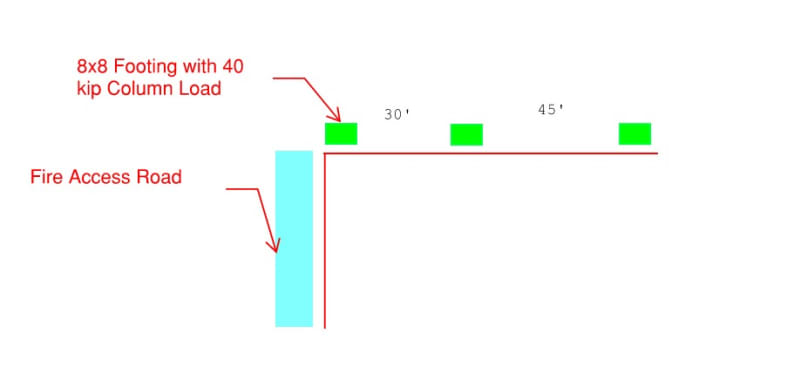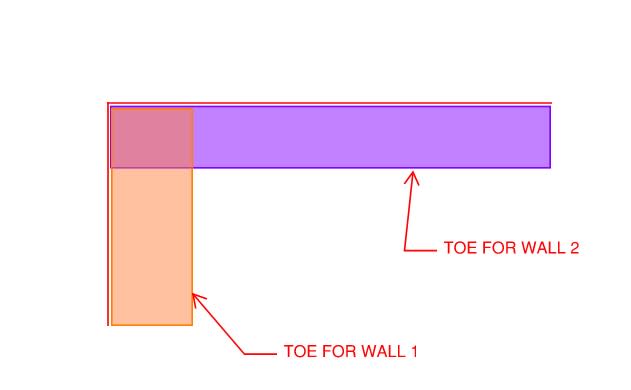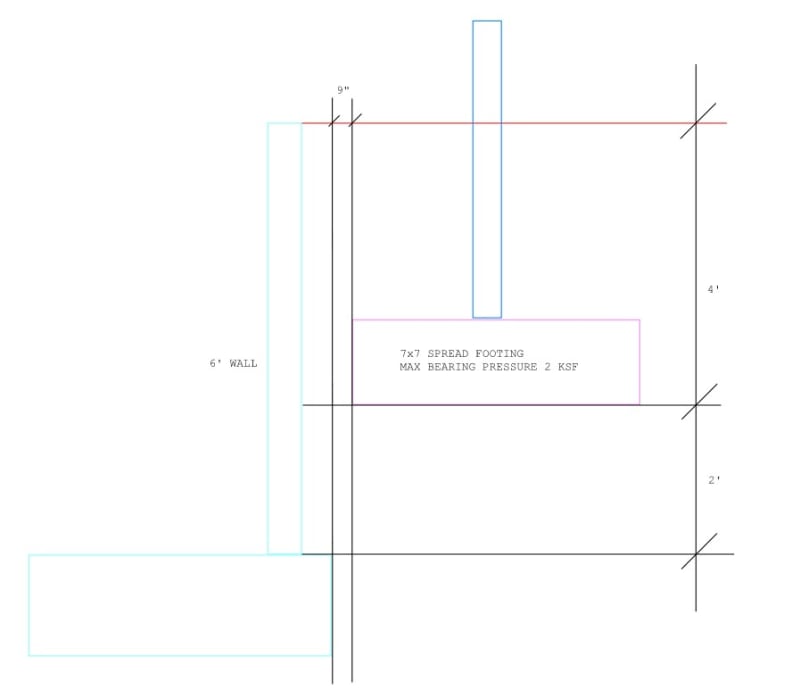I have a retaining wall with some unique loading and constraints and I'm unsure of the best approach forward.
One side has a fire truck access road 1' beyond the edge of the wall. For this, I used a 250 psf surcharge (2' soil depth) as per AASHTO.
The other side has 3 columns carrying 50 kips on 8x8 spread footings spaced ~30' and 45' apart. The footings are right next to the wall.
I used the bearing pressure under each foundation which comes out to a 50/(8x8) = 780 psf surcharge to design that wall section but not sure if that's too conservative.
The wall is ~5' high, and can only accommodate a small heel due to geometric constraints which results in a large toe and thick foundation.
Sliding is the main issue and I'm seeing a difference in opinion as to how effective a shear key would be.

One side has a fire truck access road 1' beyond the edge of the wall. For this, I used a 250 psf surcharge (2' soil depth) as per AASHTO.
The other side has 3 columns carrying 50 kips on 8x8 spread footings spaced ~30' and 45' apart. The footings are right next to the wall.
I used the bearing pressure under each foundation which comes out to a 50/(8x8) = 780 psf surcharge to design that wall section but not sure if that's too conservative.
The wall is ~5' high, and can only accommodate a small heel due to geometric constraints which results in a large toe and thick foundation.
Sliding is the main issue and I'm seeing a difference in opinion as to how effective a shear key would be.



